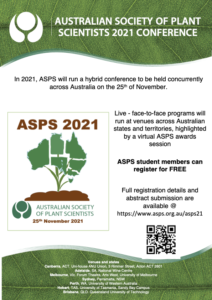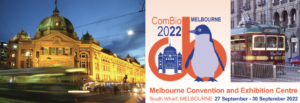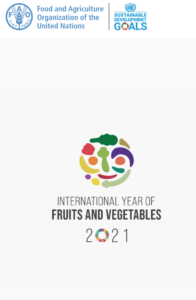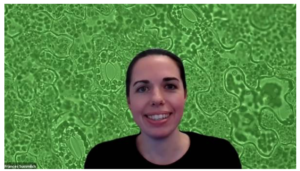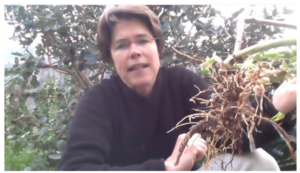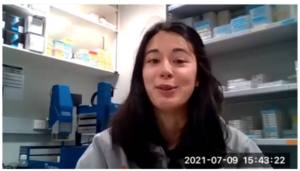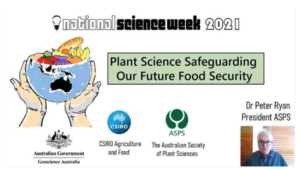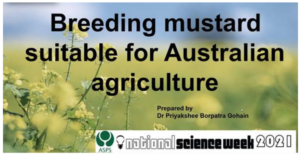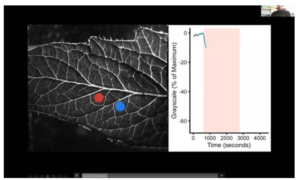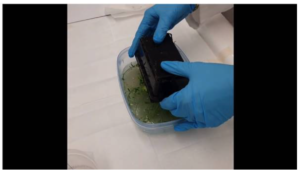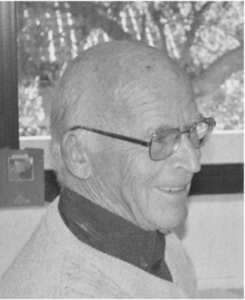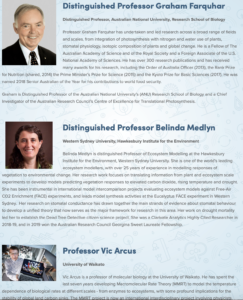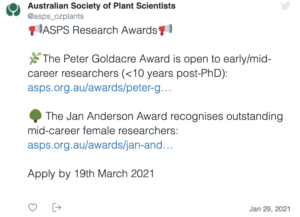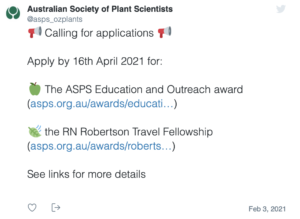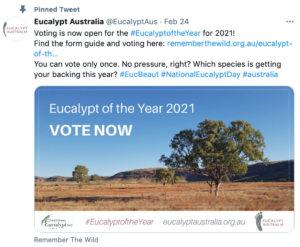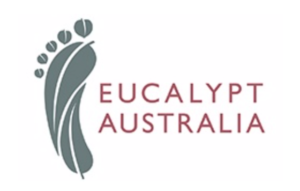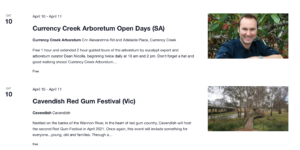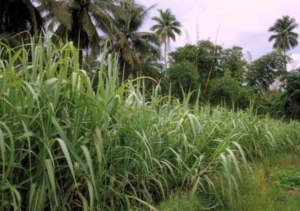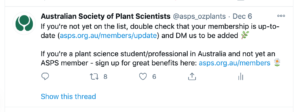- About
- Members
- Join
- Member log in
- Membership Renewal
- Member directory
- Life Members
- ASPS Life Member Professor Graham Farquhar
- ASPS Life Member Associate Professor Hendrik (Hank) Greenway
- ASPS Life Member Dr Marshall (Hal) D Hatch
- ASPS Life Member Dr Paul E Kriedmann
- ASPS Life Member Dr Mervyn Ludlow
- ASPS Life Member Emeritus Professor Rana Munns
- ASPS Life Member Conjoint Professor Christina E Offler
- ASPS Life Member Professor (Charles) Barry Osmond
- ASPS Life Member Emeritus Professor John W Patrick
- ASPS Life Member Dr Joe Wiskich
- Corresponding Members
- Elected Fellows
- Events
- Awards & Funding
- Employment
- Publications
- Research
- Teaching
- Menu
October Phytogen – Time to register for ASPS2021
17 October 2021
Welcome to Phytogen for October 2021. On the weekend it was World Food day, very significant in this Year of Fruits and Vegetables.
To get you thinking about food, you might like to watch Matt Tucker from the University of Adelaide explaining how crops have developed over hundreds of years of cultivation. The talk provided excellent descriptions of genetic engineering and gene editing.
If you haven’t managed to register yet for ASPS2021, this week is the time. Grab a carrot juice or which ever fruit and vegetable juice you like and head to the registration page.
Abstracts are due and Early bird registration applies until this Friday 22nd October. I am sure you will enjoy the spectacle of our states meeting up for the award talks in the middle of the day (12 noon AWST or 2pm AEST) on 25th November 2021.
Five ASPS Award Lectures:
Peter Goldacre Award Presentation & Lecture: Dr Joanna Melonek (University of Western Australia)
Jan Anderson Award Presentation & Lecture: Dr Kim Johnson (La Trobe University)
Best FPB paper Award Presentation and Lecture: Dr Ximeng Li (Western Sydney University)
RN Robertson Lecture: Professor Christine Beveridge (University of Queensland)
Teaching and outreach Award Presentation & Lecture: Dr Kim Johnson and Associate Professor Monika Doblin (La Trobe University)
Please login and check your ASPS membership is up to date. Encourage your colleagues and students to join ASPS. Go to: https://www.asps.org.au/members/join
Tweet to @asps_ozplants your news and upcoming events.
September 2021 Phytogen
15 September 2021
Welcome to Phytogen for September 2021.
It is two months until our meeting. Hope you are all managing to write and submit abstracts. Registration is now open for our 2021 ASPS hybrid conference on the 25th of November 2021.
In the lead up, we would like to collect feedback from our members on our Diversity and Inclusion Policy. Here is an introduction from Past President Professor Kathleen Soole, Flinders University and President Dr Peter Ryan, CSIRO ACT:
Science and Technology Australia is Australia’s peak body in science and technology, with a mission to advance the public good and social and community welfare and strengthen society through education outreach and programs. ASPS is an active participant in this group. In 2018, our Honorary Secretary that year, Dr Vanessa Melino, attended the Science and Technology Australia (STA) Annual general meeting, where discussions focussed on how our scientific societies are dealing with diversity and inclusion in their membership and activities. An outcome from this meeting was the development of a draft Diversity and Inclusion Policy put together by Drs Vanessa Melino, Eloise Foo and Megan Shelden, which was presented and supported at the ASPS 2020 AGM. ASPS strongly holds that there is no place in our Society, or in the wider community, for any discrimination on the basis of race, religion, gender, sexuality or disability. Indeed, the Society believes that creativity and progress are stifled when any of these factors impact its members. This Diversity and Inclusion Policy Statement is a “living” document that encourages discussion and revision. It provides our Society with the opportunity to formulate policies and activities that will uphold these values into the future.
We welcome your feedback (participate in mentimeter) on this document for discussion at our 2021 AGM and endorsement for its inclusion on our website.
ASPS Diversity and Inclusion- You are welcome! You are heard!
As the representative body of the leaders in Plant Sciences in Australia, we want to encourage plant science training and workplaces to be welcoming, diverse, inclusive and equitable.

Our meeting checklist- use this to develop events that are welcoming, inclusive and equitable
- aim for gender parity in selection organisers/chairs/speakers
- consider career stage, cultural and linguistic diversity when selecting these positions
- include a welcome to country in our activities
- encourage inclusive and respectful behavior
- if possible, include a “noisy room” with talks streamed to this room to enable people to bring kids if needed ensure there are facilities for breastfeeding and the location is included in meeting information
Our prizes and awards
When assessing applicants for various ASPS awards, consideration will be given for research output relative to opportunity. This means applicants that have experienced career interruptions due to caring responsibilities or illness will only be assessed relative to opportunity.
Jan Anderson Award A specific award to showcase early to mid-career women plant scientists.
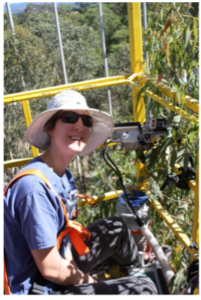
“ Getting the Jan Anderson Award was a great recognition of my research to understand plant responses to both elevated CO2 and climate warming, including my contribution to several global datasets. It was important to be recognised by peers in Australia, especially during a tough year for mental healthy (COVID). The award led to an invitation as a discipline representative of Whole Plants for ASPS.”
Dr Kristine Crous, joint Jan Anderson award 2020.

“The Jan Anderson Award aligns so nicely with the society’s mission to promote Australian plant research in a collaborative and fair manner, by simultaneously pushing for gender equity and fostering the development of early/mid-career researchers. Since receiving this, my first major award as a researcher, I have gained confidence to engage with more funding opportunities and career development programs, which will ultimately help me become a more independent and well-rounded plant scientist. I believe it is essential for awards like this to exist, but also so important to encourage our female (and often reluctant) co-workers, to nominate. Whether career focussed, or divided between career and family, I feel that many women sell themselves short and will greatly benefit from honest encouragement. I wouldn’t have done it without a little push from my own co-workers and collaborators!”
Dr Crystal Sweetman, joint Jan Anderson award 2020.

“I am truly honoured to win this prestigious award, especially as Australia has so many wonderful female plant scientists. I am completely fascinated by the complex interactions within a plant cell and I am driven by the discoveries we make in the lab. I hope that I can encourage a passion for plant science and be a positive role model for a career in plant research,”
Dr Monika Murcha, Jan Anderson award 2019.
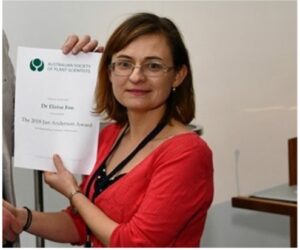
“I was so honoured to receive the inaugural Jan Anderson Award in 2018. Delivering the lecture at Combio 2018 to such a warm and supportive community was a true highlight and enabled me to reflect on the fantastic mentors and colleagues I have had. I feel real change is afoot to enable people to balance a research career with all the other great things in life (family, leisure time, community). This is not just to support women to navigate the challenging but rewarding path to a research career but also opens up a different way for everyone to lead successful and balanced lives.”
A/Prof Eloise Foo, Jan Anderson award 2018.
We hope each of you can devote some time to reading the policy and then participate in the mentimeter. It will remain open until our November meeting giving plenty of time to receive your ideas. They are anonymous and will be populated in the window below. You can participate and add as many suggestions as you like.
Please click on this link: ASPS Diversity and Inclusion Policyto read the detailed policy. |
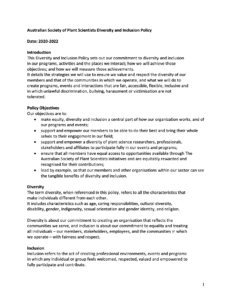 |
Click: mentimeter to participate in the mentimeter survey.
Please keep your ASPS membership up to date and encourage your colleagues and students to join ASPS.
Tweet to @asps_ozplants your news and upcoming events.
August 2021 Phytogen – National Science Week – That’s a Wrap.
29 August 2021
Welcome to Phytogen for August 2021. Here is an article summarising many National Science Week events throughout August. Thank you all for your contributions and hard work.
National Science Week has officially wrapped up for 2021. This year, the theme for ASPS events was “Plant Science Safeguarding Our Future Food Security”. ASPS kicked off with a “Meet a Plant Scientist” video series, with ASPS members at diverse career stages and representing a wide array of fields of plant science submitting 30s videos introducing themselves and their research – you can still see them all here: https://www.youtube.com/playlist?list=PLCjVjret6uSjalUbDCO8a8jjuJesKZ8y3.
Dr. Frances Sussmilch UTAS, Prof. Uli Mathesius ANU, and Sabrina Davies UWA, among many in the “Meet a Plant Scientist” video series.
In South Australia, Dr Megan Shelden, Dr Beth Loveys and Dr Georgia Koerber organised a very successful face-to-face event on 22nd August at the Waite Campus, University of Adelaide, with a series of engaging talks and tours explaining the pivotal role plant scientists and agriculturalists play in feeding and clothing us all. This included talks by Megan, Prof. Martin Cole, Prof. Rachel Burton, and PhD candidate Ali Gill, with Sciren running sessions for people to extract DNA from strawberries and make terrariums, and tours of the Waite Arboretum, Plant Accelerator, and TERN Plant and Soil Library.
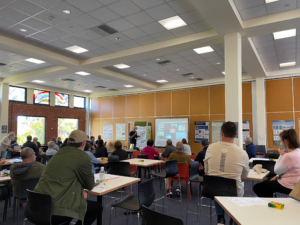
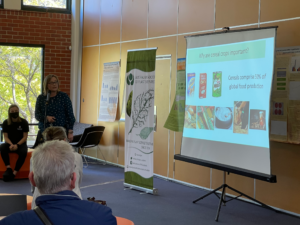
Prof. Martin Cole talking about Food Security and Dr. Megan Shelden explaining why cereal crops are important.
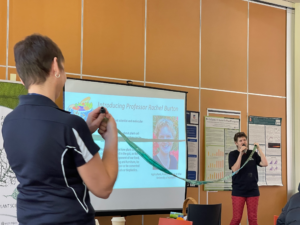
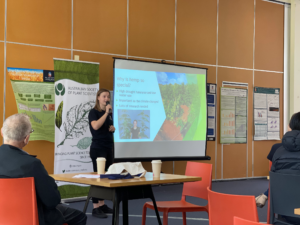
Prof. Rachel Burton and Dr. Beth Loveys showing people in Adelaide how long their digestive systems are and Ali Gill explaining why hemp is special.
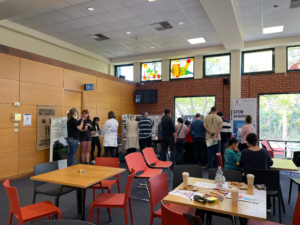
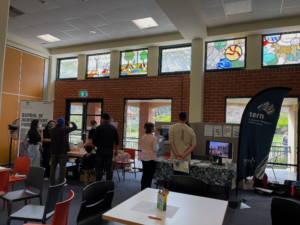
Stalls for University of Adelaide’s School of Agriculture, Food and Wine and TERN, Terrestrial Ecosystem Research Network, University of Adelaide’s Postgraduates Association at the Waite, the Australian Plant Phenomics Facility and the STEM academy.
In Victoria, Dr. Kim Johnson and Dr. Janet Wheeler shifted events online. They ran an interactive session called “Project Feed 10 billion” with 80 Virtual Schools Victoria, year 8-9 students and 10 teachers on 19th August. The session covered the challenges of feeding the future population with sustainable nutritious foods. Kim and Janet also ran a demonstration to 45 students and 5 teachers from Reservoir Views Primary School where they showed a healthy and less healthy meal going through the digestive system.

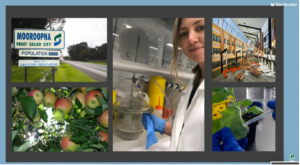
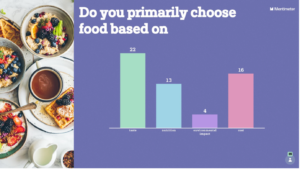 Dr. Kim Johnson with “Project Feed 10 billion” from La Trobe University and survey results from interactive session with 80 Virtual Schools Victoria, year 8-9 students.
Dr. Kim Johnson with “Project Feed 10 billion” from La Trobe University and survey results from interactive session with 80 Virtual Schools Victoria, year 8-9 students.
In Sydney, Dr. Claudia Keitel, in collaboration with the University of Sydney’s Plant Science and Agriculture academics, staff from the Sydney Institute of Agriculture (SIA) and the University’s Outreach Team, organised a series of talks and interactive activities online on the 20th August, with around 200 participants from 22 schools joining on the day. Talks from Prof. Brent Kaiser, Prof. Daniel Tan, Assoc. Prof. Brian Jones, Prof. Robert Park and Dr. Floris van Ogtrop focused on topics such as future opportunities for products and businesses based on plant protein, the future of cotton production, CRISPR as a 21st century breeding tool, genetic approaches to control plant diseases, and urban agriculture. The activities gave attendees the opportunity to learn how plants grow to produce vegetables we eat, how genetics and environmental conditions influence plant traits, how to fingerprint wheat chromosomes and identify chromosomal fragments introduced from wild relatives with Assoc. Prof. Mary Byrne, Assoc. Prof. Marcus Heisler, Dr. Claudia Keitel, Assoc. Prof. Rosanne Quinnell and Dr. Peng Zhang. You can find more information about this event here: https://www.sydney.edu.au/science/news-and-events/events/future-plants-for-food-security.html.
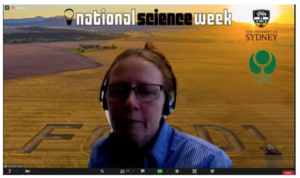
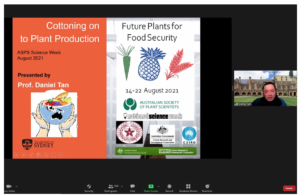
Dr. Claudia Keitel, addressing 206 participants from 22 schools, in Sydney and Prof. Daniel Tan giving a talk about the future of cotton production.
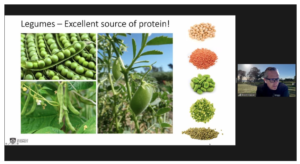
Prof. Brent Kaiser talking about the power of plant protein.
Queensland University of Technology (QUT) offered a virtual tour of the biology labs – you can check them out here: https://cdn.qut.edu.au/media/qut-science-experience-anz/ and https://my.matterport.com/show/?m=cEBNvWzjjw7.
Researchers from other universities and states recorded videos of talks and lab tours for our YouTube channel (https://www.youtube.com/channel/UC4-hDpe7OR3kwpMxy4ES6ng). The ACT was represented with fantastic talks from CSIRO and ANU researchers including our President Dr. Peter Ryan, Jess Hyles, Dr. TJ Higgins AO, Dr. Di He, Prof. Uli Mathesius and Dr. Ricky Milne, and Ryan Ruddick from Geoscience Australia (https://www.youtube.com/playlist?list=PLCjVjret6uSh67u7d2U2B1mGRFARal9mt).
The Byrt Lab at ANU walked us through Agrobacterium-mediated transformation using the floral dip method (https://www.youtube.com/watch?v=Hj0iM3zi6_E&list=PLCjVjret6uSg1pLNehyuIm01NTuIQH7PM). Early career researchers at Southern Cross University, including Dr. Jay Anderson, Master of Science candidate Janelle Schafer, and Dr Priyakshee Borpatra Gohain, each gave great talks about their research (https://www.youtube.com/playlist?list=PLCjVjret6uSjLV-oQh-iMEwaixzbn1zLm).
Prof. Ros Gleadow from Monash University talked about her research on how plants including sorghum and cassava make cyanide (https://www.youtube.com/watch?v=6egOt1qNo58&list=PLCjVjret6uSgZYVZ_DhQ8KZq8Vh5NIC9e).
Prof. Tim Brodribb from University of Tasmania showed us why leaves die during drought stress with a video depicting what happens during this process (https://www.youtube.com/watch?v=0M-sZETVoQ8&list=PLCjVjret6uShxXJbRyx1HIJZbEtyS8tK-).
ASPS President Dr. Peter Ryan in the introduction for the ASPS Science Week 2021 YouTube channel.
Dr. Priyakshee Borpatra Gohain’s talk, within a series from ECRs at Southern Cross University and Prof. Tim Brodribb from UTAS explaining why leaves die during drought.
Members of the Byrt Lab at ANU demonstrating floral dipping for Agrobacterium-mediated transformation.
We will keep the ASPS Science Week 2021 YouTube channel up, so you still have the opportunity to check out any videos you missed.
Registration is now open for our 2021 ASPS hybrid conference on the 25th of November.
July Phytogen – Best in the World
23 July 2021
Welcome to Phytogen for July 2021. Our thoughts are with all of you as COVID-19 is still quite a challenge. On a positive note, the Olympics will be underway tonight with the opening ceremony and for the next couple of weeks, athletes will be striving to be the best in the World.
Next month, several events will be happening for National Science Week from the 14th-22nd August 2021. To reiterate Peter Ryan’s email: Sydney, some regional areas in NSW and possibly Melbourne and Adelaide will be in lockdown during Science Week. We now encourage all speakers to record their talks and maybe even do virtual tours of the labs etc. Please send all files to this email address prior to Science Week: ausplantsci@gmail.com. They will be curated into groups and themes and placed on a YouTube site that has been prepared for everyone to access.
This weekend, while watching the olympics, take a break and record your 30 second video that will be compiled with others into a promotional video for all our events. In your 30 second video please tell us
(2) your institution,
(3) the piece of plant science research that you are most proud of and
(4) the most pressing plant science research question you want to resolve in the future.
We need your 30 second video files by 25th July.
Instructions for the 30 sec videos (PowerPoint recording is another option):
– Log into Zoom and create a new meeting.
– Select ‘record’. Record yourself (as if in a meeting) explaining the four items above.
– Then stop the recording and stop the meeting (the file should be on your computer).
– Open the file location and make sure it is 30 seconds or less. Check the size and clarity – 30 sec video files should be <4 MB so they are easy to email.
– NB: Zoom allows you to chose a background image relevant to your work (your favorite plant, field site, lab equipment, figure file) – this will make your content more engaging. Email your video files to ausplantsci@gmail.com (if it is too large try sending it to Peter.Ryan@csiro.au). Thank you!
– Contact Caitlin Byrt for assistance (Caitlin.Byrt@anu.edu.au)
We are hopeful for in person events and ASPS now has a website to direct people for booking tickets. Click here. Organisers, remember to send details of your events to Janet (Janet.Wheeler@latrobe.edu.au) as they come together.
The theme for all the events we are organising is: “Plant Science Safeguarding Our Future Food Security: By the middle of the century there will be almost 10 billion people on Earth – an awful lot of mouths to feed, especially when a warming climate makes agriculture more challenging. Scientists may save the day by helping crop species adapt and thrive as growing conditions change.
The Australian Society of Plant Scientists is organising visits to laboratories and field sites across the country. Through talks, displays and demonstrations they give rare insight into the challenges faced by farmers, and how food scientists are working to help.”
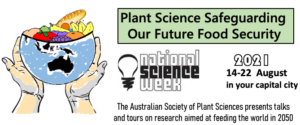
In the coming weeks, look out for ASPS events posted to the “Find an Event” page on the National Science Week webpage, and also posted to ASPS’s twitter account (@asps_ozplants), which hopefully you are all following. Please be part of the action and post your events too.
Events
registration details for our hybrid meeting in 2021 soon………
Please login and check your ASPS membership is up to date. Encourage your colleagues and students to join ASPS. Go to: https://www.asps.org.au/members/join
Tweet to @asps_ozplants your news and upcoming events.
June 2021 Phytogen
15 June 2021
Welcome to Phytogen for June 2021. Plans are well underway for a National ASPS Hybrid meeting on Thursday and Friday 25th and 26th November 2021. More details soon. Meanwhile, in this issue:
-
Report from 2020 Jan Anderson Award joint recipient, Dr Kristine Crous, Western Sydney University.
-
National ScienceWeek 2021 – 14th-22nd August
In 2020, we had joint recipients for the Jan Anderson Award. I hope you will enjoy reading about the wonderful work by Kristine Crous from Western Sydney University.
2020 Jan Anderson Award joint recipient – Dr. Kristine Crous, Western Sydney University.
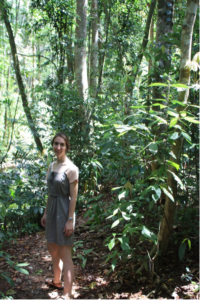
Fig.1: Kristine in tropical rainforest in Australia. |
Globally, the average temperature has increased by about 1°C since the Industrial revolution, and Australia has experienced a sustained period of warmer climate over the past 10 years including several of the hottest summers on record. While Australia is one of the drier continents in the world, there is also a lot of biodiversity with a unique set of plant and animal species. We all depend on plant species and their ecosystem services in several ways (i.e. food, clean air, ecotourism) but it is still unclear to what extent these services will change in a future warmer world. Understanding how plant function adjusts to these warmer conditions, in part caused by commensurate increases in atmospheric CO2 has been the focus of my research effort.
The Jan Anderson Award recognised the contributions that I made to understand plant responses to both elevated CO2 and climate warming, insights that contributed to several global datasets (Atkin et al., 2015; Kumarathunge et al., 2019; Smith et al., 2019) and to improve climate feedbacks represented in models (De Kauwe et al., 2013; Jiang et al., 2020).
I have conducted several experiments on Eucalyptus species to understand their physiological responses of photosynthesis (Crous et al. 2013) and respiration to climate warming (Crous et al. 2011, 2017). In an experiment using temperate and tropical provenances of two broadly distributed Eucalyptus species, I discovered that photosynthesis operates closer to the temperature optimum in tropical provenances than temperate provenances (Crous et al. 2018).
Given that there are large uncertainty regarding the temperature responses of rainforest species, I have measured the temperature response curves of photosynthesis and respiration in tropical and temperate rainforests to understand how close they are operating to their thermal optimum and how vulnerable these species are to further climate warming, as part of a DECRA award (Fig. 1).
Not only are Australian rainforests biodiverse, they have a direct link to the past, as many rainforest species have a Gondwanan lineage. So while these rainforests have seen some climate change in the past, the question is how will they cope with future climate warming?
To explore future climate conditions, my work has involved experimental set-ups such as the whole-tree chamber experiment (Fig. 2) or the Eucalyptus free-air CO2 enrichment experiments (EucFACE) (Fig. 3, 4), where elevated atmospheric CO2 or atmospheric warming treatments can be applied on large trees. Because trees have long lifespans, their ability to acclimate will likely be an important factor in determining their future.
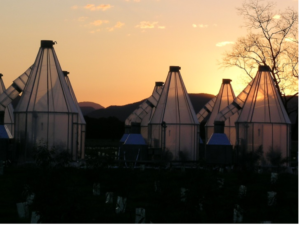 |
 |
Fig. 2: The whole-tree chamber experiment at Western Sydney University in Richmond after completing diurnal measurements (left) and measurements on saplings outside the chambers (right).
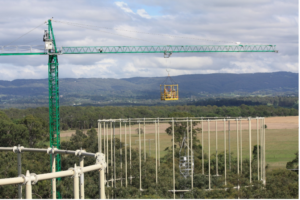
Fig. 3. Getting ready to do measurements in the Eucalyptus canopy at the EucFACE experiment at Western Sydney University (above) and measuring photosynthesis (right). |
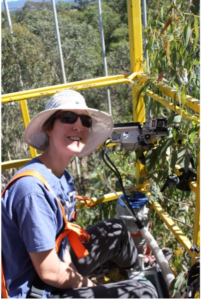 |
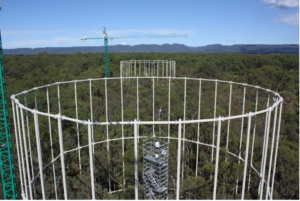
Fig. 4. EucFACE, two out of the six plots, view from above.
These large-scale experiments enable many collaborations examining different parts of an ecosystem in an attempt to understand the bigger picture including feedbacks of nutrients on the carbon cycle. While we are developing some understanding on how plants adjust to warmer temperatures, there are still many questions that are unclear, especially around temperature limits and plasticity among different plant species. Most models currently do no account for thermal acclimation of respiration and/or photosynthesis, with the risk of overestimating future responses of carbon uptake.
Recently, I have been elected as a ASPS representative for NSW in the discipline of whole plants. I hope that we can continue to link plant responses from molecular to ecosystem scales back to the whole plant and what it means for its survival, function and growth. Changes in response to biotic and abiotic factors in a plant’s environment drive natural selection which is part of how plants adapt to new conditions.
References
Atkin, O.K., Bloomfield, K.J., Reich, P.B., Tjoelker, M.G., Asner, G.P., Bonal, D., et al. (2015). Global variability in leaf respiration in relation to climate, plant functional types and leaf traits. New Phytologist 206(2), 614-636. doi: 10.1111/nph.13253.
Crous, K.Y., Drake, J.E., Aspinwall, M.J., Sharwood, R.E., Tjoelker, M.G., and Ghannoum, O. (2018). Photosynthetic capacity and leaf nitrogen decline along a controlled climate gradient in provenances of two widely distributed Eucalyptus species. Global change biology 24:4626-4644. doi: 10.1111/gcb.14330.
Crous, K.Y., Quentin, A.G., Lin, Y.S., Medlyn, B.E., Williams, D.G., Barton, C.V.M., et al. (2013). Photosynthesis of temperate Eucalyptus globulus trees outside their native range has limited adjustment to elevated CO2 and climate warming. Global Change Biology 19(12), 3790-3807. doi: 10.1111/gcb.12314.
Crous, K.Y., Wallin, G., Atkin, O.K., Uddling, J., and af Ekenstam, A. (2017). Acclimation of light and dark respiration to experimental and seasonal warming are mediated by changes in leaf nitrogen in Eucalyptus globulus. Tree Physiology 37(8), 1069-1083. doi: 10.1093/treephys/tpx052.
Crous, K.Y., Zaragoza-Castells, J., Loew, M., Ellsworth, D.S., Tissue, D.T., Tjoelker, M.G., et al. (2011). Seasonal acclimation of leaf respiration in Eucalyptus saligna trees: impacts of elevated atmospheric CO2 and summer drought. Global Change Biology 17(4), 1560-1576. doi: 10.1111/j.1365-2486.2010.02325.x.
De Kauwe, M.G., Medlyn, B.E., Zaehle, S., Walker, A.P., Dietze, M.C., Hickler, T., et al. (2013). Forest water use and water use efficiency at elevated CO2: a model-data intercomparison at two contrasting temperate forest FACE sites. Global Change Biology 19(6), 1759-1779. doi: 10.1111/gcb.12164.
Jiang, M., Medlyn, B.E., Drake, J.E., Duursma, R.A., Anderson, I.C., Barton, C.V.M., et al. (The fate of carbon in a mature forest under carbon dioxide enrichment). 2020. Nature accepted on Feb 5th 2020.
Kumarathunge, D.P., Medlyn, B.E., Drake, J.E., Tjoelker, M.G., Aspinwall, M.J., Battaglia, M., et al. (2019). Acclimation and adaptation components of the temperature dependence of plant photosynthesis at the global scale. New Phytologist 222(2), 768-784. doi: 10.1111/nph.15668.
Smith, N.G., Keenan, T.F., Colin Prentice, I., Wang, H., Wright, I.J., Niinemets, U., et al. (2019). Global photosynthetic capacity is optimized to the environment. Ecology Letters 22(3), 506-517. doi: 10.1111/ele.13210.
National Science Week 2021
Many events (August 14th-22nd 2021) are happening nationally and the ASPS is part of the action.
The theme for all the events we are organising is: “Plant Science Safeguarding Our Future Food Security: By the middle of the century there will be almost 10 billion people on Earth – an awful lot of mouths to feed, especially when a warming climate makes agriculture more challenging. Scientists may save the day by helping crop species adapt and thrive as growing conditions change.
The Australian Society of Plant Scientists is organising visits to laboratories and field sites across the country. Through talks, displays and demonstrations they give rare insight into the challenges faced by farmers, and how food scientists are working to help.”

In coming weeks, look out for events posted to the “Find an Event” page on the National Science Week webpage, and also posted to ASPS’s twitter account (@asps_ozplants), which hopefully you are all following. Please be part of the action and post your events too.
Tweet to @asps_ozplants
July Phytogen will aim to provide a list of the ASPS events happening during August 2021.
Events
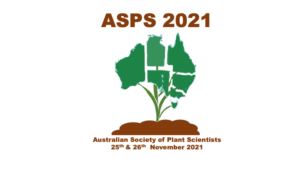
details soon………
Please login and check your ASPS membership is up to date. Encourage your colleagues and students to join ASPS.
Tweet to @asps_ozplants your news and upcoming events.
April 2021 Phytogen: Vale Hank Greenway, Presidents note and Science Meets Parliament 2021
23 April 2021
Welcome to Phytogen for April 2021,
Presidents note. Phytogen April/May 2021
One of my priorities as President of ASPS is to address the falling enrolments at schools and universities in plant science and agriculture-related subjects. This trend is especially alarming considering the unprecedented challenges looming as we endeavour to feed and clothe an extra two billion people by the middle of the century.
This task is already difficult but several additional constraints make it even more daunting. This leap in production needs to occur rapidly, sustainably, in a changing climate and while most countries attempt to reduce net greenhouse gas emissions to zero. Furthermore, the burgeoning middles classes in Asia, Africa and South America will demand more animal-based foods which are resource-intensive and inherently less efficient at generating calories. Perhaps most sobering of all, the area of land that we can use to grow these crops and the farm animals cannot increase. It is essential that the remaining natural forests, woodlands and coastal ecosystems are conserved to maintain habitats, protect biodiversity and sustain planetary cycles.
Therefore, the sustainable intensification of current production systems is the only alternative. Plant scientists will clearly play a pivotal role. Hence, it is imperative that we encourage more bright and enthusiastic students to choose plant science as a career.
To this end, ASPS applied for funding from the Department of Industry, Science, Energy and Resources to highlight plant science during Science Week (14-22 August 2021). We were successful and now the planning begins.
The basic idea is that ASPS members around Australia will coordinate visits by the public to their universities and research institutes. There will be introductory presentations to explain the challenges of the future, highlight the excellence of Australian science in these areas and explain how it’s contributing to food security in a changing climate. The introduction will be followed by shorter presentations from younger scientists and research students from a range of topics. The topics will vary from institution to institution depending on the expertise of the scientists but examples will be presented of very applied projects as well as more fundamental research areas. In all cases the talks will be relevant, engaging and place the science into a real-life context that all can understand. An open discussion and question time will hopefully be followed by some simple activities or “show and tells”, or even tours through laboratories and other facilities.
In the end, we hope to emphasise that plant science involves a range of topics and skills. We are not all men, not all in lab coats, not (all) quirky and, surprisingly, not even all biologists. We want to impress how critical plant science is to the future and to inspire young adults to get on board. This is something we can all agree on.
A core group of ASPS members from about 12 universities from around the country have already put up their hands to coordinate this event. We will soon distribute their names to you all. After another meeting or two they will be looking for helpers. I encourage you all to contribute where you can to this important activity.
Dr Peter Ryan (President, Australian Society of Plant Scientists)
For your calendars: Science week is 14th – 22nd August 2021. Follow this link to read about ASPS’s event under the ACT plus many others too.
Science Meets Parliament 2021
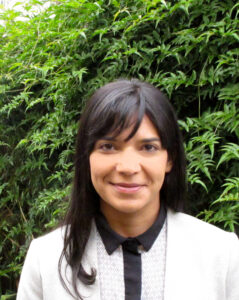
Diana Ramirez Garces, Australian National University
During March, I attended Science Meets Parliament (SmP). I am happy I did, and I am thankful for ASPS support. This year, except for the gala dinner and the speech of the Chief Scientist Dr. Cathy Foley at the National Press Conference, the event was online. Although this format imposed some challenges, it permitted to extend the program with workshops prior and after the main two-day event. All sessions were recorded and accessible on demand, which made easier to accommodate the SmP in a busy schedule. In addition, networking and meeting of delegates was facilitated by implementing an ‘open zoom bar’ setting on different days. I particularly enjoyed the pre-workshops ‘Understanding Machinery of Government’ and ‘How to Marie Kondo’ your writing’. During the session ‘How to engage with advisors’, Anna-Maria Arabia (The Australian Academy of Science CEO) and Harry Godber (a policy advisor of senior ministers) provided interesting insights into the advisory role and this motivated me to seriously consider a career change. Most sessions were organised as conversations and the speakers integrated discussions and questions from the audience. One of the highlights of SmP is the meeting of delegates with a Parliamentary. But no panic! To help you prepare the meeting, the organisers devoted an entire session to deliver key points to build your pitch, to rehearse it and get professional feedback. I participated in SmP because, over the past years, I became more appreciative of the role of policy makers and the impact of evidence-based decisions in our daily lives. The Covid-19 pandemic changed transcendentally my awareness towards science policy and made me reflect on my role as scientist. I wanted, therefore, to begin to understand policy processes and how science peak bodies and other organisations articulate with public service and Parliamentary activities. The event promised to be an excellent opportunity to picture the Australian science landscape, its leading voices, and institutions. I also hoped SmP woud be a good place to start exploring the idea of a career transition. The program met all these expectations. But you don’t need to wait to have a plethora of reasons to attend nor any prior knowledge. I had a wonderful experience and I highly encourage you to participate. If you are slightly curious about SmP, like I was a few years back when I first heard about it, then you must attend. All you need is a desire to get inspired by incredible people!

Photo: ‘New to Canberra’ session where experts explained how media, public service and advocacy groups engage to influence policy priorities. Top left panel: Misha Schubert (CEO, Science and Technology Australia); top right panel: Feyi Akindoyeni (Partner and Office Head, New Gate Communications); lower left panel: Rachel Obradovic (Director CT Group); lower right panel: David Fredericks (Secretary Department of Industry, Science, Energy and Resources).
Joseph Pegler, The University of Newcastle
In my opinion, an inherent quality of a scientist is the desire to leave things better than when they found them. Regardless of the field of research, pushing the envelope of knowledge forward not only satisfies one’s curiosity for answers but drives society towards addressing the issues faced by current and future generations.
As the issues we face globally require cross-discipline and cross-sector collaboration, I felt privileged to be selected as one of the ASPS delegates for Science meets Parliament 2021. Traditionally run as a two-day event hosted annually in Canberra, this year’s event was alternatively hosted online because of COVID-19. While the format had been modified, the concept of facilitating the interaction of STEM professionals and politicians remained unhindered. The benefit of the virtual attendance format resulted in sessions to be run from mid-March until its conclusion on the 31st of March. I found the sessions to be extremely beneficial, with the virtual sessions largely centred around expert panels providing their wealth of knowledge on all things policy, networking, media engagement, effective communication and the importance of cross-sector collaboration particularly strengthening the ties between STEM professionals, politicians and political staffers.
Focusing on the content of the two main days and while there were many more highlights, I will touch on three. When attending a session on ‘How to be a great ambassador for the STEM sector’, it comes as no surprise Corey Tutt, founder and CEO of Deadly Science, was an ideal panellist. It was great to hear from Corey who highlighted the importance and the role we all have in ensuring inclusivity in science. Given the nature of this event I was eager to hear from Nobel Laureate and ANU Vice-Chancellor Professor Brian Schmidt on ‘Preparing to meet a parliamentarian’, and as expected his insight into effective science communication was extremely valuable. The final highlight I will touch on was from Dr. Sarah Pearce, Deputy Chief of CSIRO, who highlighted the importance of diversifying one’s skillset and embracing opportunities.
While the nature of sitting weeks for Federal Parliament resulted in the unfortunate termination of the meeting with my selected Federal Member of Parliament, this by no means dampened what I considered to be a tremendously beneficial and informing experience.
I would again like to thank ASPS for the opportunity and strongly encourage others to participate in future years as this is an ideal opportunity to learn from and network with a diverse number of STEM and policy experts.
Hank Greenway – an inspiring life (1926-2021)
Hank Greenway had an enduring influence on plant science in Australia and made a profound contribution to the global understanding of plant stress biology. Hank passed away in Perth in February 2021 and we celebrate here his remarkable career, particularly in research on salinity and waterlogging tolerance, and his dedication to teaching.
Hank was a founding member of the Australian Society of Plant Physiologists and was present at their first AGM in 1958. He contributed to our society of plant scientists well into his ‘retirement’ and was awarded Life Membership by the Australian Society of Plant Scientists.
Hank Greenway was born Hendrick Groenewegen in Rotterdam in 1926, bearing the guttural dialect that distinguishes that industrial port city throughout his life. His teenage years were marked by the Second World War and, with the German invasion, he de-camped to become a farm worker in the country’s north where he developed what became a lifelong fascination with agriculture and plant survival. The Netherlands has over the centuries been reclaimed from the North Sea, with the agricultural impacts of the twin perils of salinity and flooding annealed into the national psyche, and into Hank’s teenage curiosity. After the war, Hank served time in the Dutch Army in Indonesia during the independence struggle. It was in Kalimantan that he developed his interest in rice, the pre-eminent crop of South-East Asia. Years later, he would refer to the inspiration he took from the seminal work of MH van Raalte at the Bogor Botanical Gardens, demonstrating that rice roots oxygenated their tissues through internal air spaces.
On returning to The Netherlands, he studied agriculture at the Wageningen Agricultural University and graduated in 1951. He then emigrated to Australia where he first worked as a soil scientist in South Australia and, after 1952, at CSIRO Irrigation Station in Griffith NSW. Field work in the Riverina soon revealed that salt was a major impediment to crop performance and piqued his interest in the mechanisms by which salt damaged crops such as grapes while saltbush and other halophytes withstood its effects. With these observations from the field, his curiosity to discover mechanisms drew him to a PhD candidature at the University of Adelaide in 1962 under the supervision of the venerable Professor Rutherford (Bob) Robertson, a world expert in membrane transport in plants. Bob Robertson remained a great mentor for Hank, who quoted him frequently throughout his career: one notable example was Hank quoting to students Robertson’s exhortation that ‘if you are told you have ten minutes to give a talk on your work, stop after ten minutes!’. Robertson was also prescient in encouraging collaboration in research, something Hank pursued for decades to follow and of course nowadays, an essential aspect of any researcher’s success. To commemorate Bob Robertson who died in 2001, Hank instigated the ASPS RN Robertson Travelling Fellowship for early career researchers, keeping alive the principles of intellectual curiosity that Bob Robertson espoused.
While a PhD student in Adelaide, Hank added vital information to the regulation of salt tolerance in higher plants, revealing the importance of tissue level and whole-plant perspectives. Rigorous measurements of rates of ion transport showed that sodium transport was tightly controlled in barley and that ion exclusion was an important aspect of salt tolerance. Reproductive organs in particular were ‘protected’ from some of the absorbed sodium and chloride. He also demonstrated the importance of potassium:sodium ratios in salinity responses, a theme that would return many times in his later research career.
Hank returned to CSIRO in Griffith, now directing his interests to ion transport in halophytes, particularly Old Man Saltbush (Atriplex nummularia). The puzzle of how salt could enter halophytes in such large quantities without impairing function, and even accelerate growth when at low salt levels, intrigued him. From 1966, the first of a series of papers appeared on the topic, followed by a publication with Barry Osmond in 1972 showing that the enzymes of halophytes were not especially tolerant to salt. Further publications in the 1980s on the role of solutes and osmotic relations in halophytic plants have paved the way for many contemporary publications revealing molecular aspects of tolerance to very high salt loads.
In 1967, Hank took up an academic position in the Faculty of Agriculture at the University of Western Australia, where he set about a tremendously productive research program on the effects of salt on plants, complementing this with growing contributions to waterlogging tolerance, largely based on tolerance mechanisms known from rice. He was always so well aware of the fact that these stresses were widely represented in the agricultural regions of Western Australia, particularly the WA ‘wheatbelt’ with its extensive subsoil salinity exacerbated by tree clearing over this period, thanks to the inevitable waterlogging of valleys. To his students’ amusement, many coming from farms, Hank’s Dutch sensibilities prevented him from entering these remote parts of the state, too far from the ocean.
Legions of Honours and PhD students, research fellows and visiting scientists came through the group over the next 25 years. One key to this period was the arrival of Tim Setter, an itinerant American who drifted into Perth and worked alongside Hank first as research assistant then PhD student and for many years as Research Fellow. Hank was his supporter and mentor, but these roles were reversed in later life.
Hank’s research on salt tolerance took many directions: ‘physiological health’ was always at the forefront of his experimental thinking, and the distinction between growing tissues and non-growing tissues occupied much of the planning phase of experiments. He showed that changes in respiration and sugar metabolism were the result of reductions in growth caused by salinity-induced water deficits, and not its cause.
Hank’s research focussed increasingly on cell-level processes and in vitro studies, with the sensitivity of enzymes from halophytes to salt highlighting the importance of vacuolar compartmentation to keep the salt concentrations in the cytosol below toxic levels. He realised that the unicellular freshwater alga, Chlorella emersonii, would make an ideal model for deeper understanding of osmotic regulation in salty media. Using a glucose analogue that could not be catabolised, he demonstrated that sucrose and proline played a role in turgor/volume maintenance. Furthermore, he used these algal cells to draw analogies with meristematic cells and how such non-vacuolated cells ‘manage’ salts and minimise metabolic damage. He calculated the energy costs involved in using organic solutes versus Na+ and Cl– in expanding cells and also in fully expanded and vacuolated cells. These ideas were presented in a series of highly cited reviews including the Annual Review of Plant Physiology (1980) with his (then) young research colleague Rana Munns.
During the 1970s, Hank’s fascination with Asia and rice from much earlier times found its way into his second great research interest – oxygen deficits and flood tolerance – principally examined using rice as a model species but later extending to dryland cereals. These topics occupied his attention until his official retirement in 1992 and for decades longer post-retirement. Laboratory studies supported by research assistants, students and post-docs contributed to spectacular advances in the effects of oxygen deficits on tissues. Roots and coleoptiles were the prime targets of course because they had obviously evolved tolerance to hypoxia and in the case of rice coleoptiles, were virtually unique for being able to grow in anoxia. Major research findings on anaerobic metabolism came from the PhD studies of Brian Atwell followed by Susan Morrell’s work on the regulation of pyruvate decarboxylase in anoxia-tolerant rice coleoptiles, revealing an exquisitely adapted organism for growth underwater. Tim Colmer and Irene Waters also contributed to this work, which challenged the popular view that the ethanol synthesised by alcoholic fermentation was relatively toxic, instead showing that these highly anoxia-tolerant coleoptiles were vigorous producers of ethanol! Paradoxically though, he speculated that survival in the absence of oxygen was improved by down-regulating ethanol production, conserving carbohydrates for more critical uses. This curiosity about plants surviving in challenging environments led him to collaborate with his old friend Professor Bill Armstrong from England, whose expertise in the biophysics of oxygen diffusion allowed Hank to link evidence for anoxic deficits in the stele of maize roots with the induction of anaerobic metabolism and inhibition of ion delivery to the xylem.
In the early 2000s, Hank’s interests turned strongly to the implications of low oxygen supply on intracellular pH regulation and energetics, publishing two seminal reviews in Functional Plant Biology with Jane Gibbs and then a series of publications with a new generation of PhD students and early-career researchers on the transport and retention of ions in excised rice tissues. Never to rest with familiar technologies, he teamed with chemists using 31P-NMR to investigate sub-cellular pH regulation through arrest of ion transport and biochemical pH stats in anoxic tissues. These questions culminated in his last major reviews, focussing on anaerobic events as ‘crises’ in cell energetics and the role that pyrophosphate plays in mitigating the effects of an energy crisis in higher plants. His mentoring of students and his collaborations with younger colleagues and visiting scientists from Asia continued throughout his ‘retirement’.
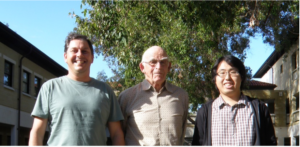
Hank Greenway with Hirokazu Takahashi (right, Nagoya University) and Tim Colmer (left, UWA) in 2010. Hank enjoyed long-standing international collaborations as well as supporting emerging researchers.
Hank’s research output was prodigious – he published 150 papers which attracted over 7,000 citations (Web of Science). The last paper was written when he was 93. This could lead to a conclusion that teaching was a secondary priority but nothing could be further from the truth. Always enthusiastic and energised about the beauty of how plants functioned, he inspired generations of undergraduate and postgraduate students with methodologies that were at the time considered rather ‘left field’. Readings were following by problem solving in student groups, with students themselves considered by Hank as central to the teaching as to the learning process. This problem-based approach to learning was almost revolutionary in the 1970s but is now coming into vogue as educationalists review the efficacy of the past structured teaching model of lectures, practicals and set-piece assignments. In the 1970s, he had students digging shallow ponds and planting cereals for later analysis of fermentative enzyme activities – not something they ever thought they had signed up to! This approach to learning was celebrated in the 2020 ASPS Teaching Award for Hank’s own account of his methods in teaching. Here is a link to an inspirational video by his colleagues: link. The feature Essay 3.1 – Using thought experiments to strengthen critical thinking at universities is laid out in fine detail in the society’s textbook ‘Plants in Action’: link.
Apart from his many domestic Honours, Masters and PhD students, Hank threw himself into research and teaching in SE Asia, running an ACIAR project with Tim Setter and subsequently Crawford Fund training courses in Thailand and Vietnam with his colleagues, including Mike Jackson, Tim Colmer and Tim Setter. Hank’s nurturing and patience with these students was always apparent — their expectations of protocols, instructions and professorial authority were always met with a very unexpected experience of alternative interpretations and coaxing towards explanations to explain the findings, with every conclusion only likely to survive until the next experiment. These field studies in Asia answered vital practical questions, especially the demonstration that complete submergence of rice after sudden rainfall led to carbohydrate starvation and thus, the importance of underwater sheath elongation for survival.
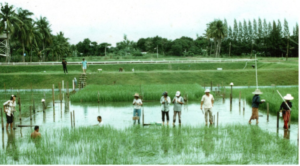
A research team led by Hank Greenway screening deep water rice in the field in Ayutthaya, Thailand (photo courtesy Tim Setter, 1985).
Hank leaves a towering legacy in science, with publications that will endure by their insights and the foundations they have laid for understanding abiotic stresses in plants. He also leaves a generation of proteges who continue his enthusiasm for discovery, and it would doubtless delight him to see the many new ways that his seminal discoveries and theoretical insights can be built upon with new technologies. And finally, we say farewell to a humanist whose love of his wife Tricia and family, the Indian Ocean and his large scientific community leaves us all much better for having known him.
Brian Atwell and many others
Please keep your ASPS membership up to date and encourage your colleagues and students to join ASPS.
Tweet to @asps_ozplants your news and upcoming events.
Plus… save the date for Thursday and Friday 25th and 26th November 2021 for our ASPS hybrid conference. Details soon.
March Phytogen 2021
26 March 2021
Welcome to Phytogen for March 2021.
On the Wednesday 17th March 2021, Australia’s chief scientist Dr Cathy Foley spoke at the National Press Club. If you haven’t watched this yet, I hope you can find time this weekend or over the Easter break. You can watch on:
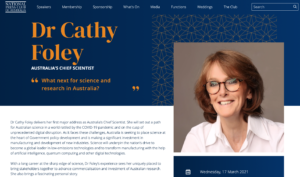
The title of the talk was “What next for science and research in Australia?”
Here is an article by the ASPS Environmental and Ecophysiology: Global Change Representative Dr Georgia Koerber from the University of Adelaide. email: georgia.koerber@adelaide.edu.au
Last year, I decided to upskill. I have always been alright at statistics therefore I went for an online Masters in Data Science. This nice article by open universities describes up-skilling well. At the beginning of 2021, many universities are having increased demand for postgraduate courses such as 6 to 12 month certificates and masters offered online. There were government initiatives too for subsidised university courses so that we could upskill while working from our homes last year.
Even though, I don’t think I had many more hours, I did feel niggling to attempt to get ahead of the curve as described in this Conversation article: What should we do with 1 billion hours of time? Australian’s COVID-19 opportunity.
Below are slides from my presentation (online of course :)) of my python project. I had taken photos of the tree canopies from 2013 to 2019 and calculated the leaf area index (LAI). I aimed to explore if LAI related to normalised difference vegetation index (NDVI), enhanced vegetation index (EVI) calculated from satellite data I downloaded, and how much carbon dioxide the mallee forest was storing as carbon, the net ecosystem production (NEP) recorded by the Terrestrial Ecosystem Research Network (TERN) Calperum tower during the same time period. In the future, and probably not too much distant into the future; it will be much more powerful to monitor how forest canopies are tracking with NEP than having to carry out laborious field measurements and calculations of leaf area index. Later this year will be my next subject in python and I look forward to adding in data from other sites around Australia and maybe even sites from other countries.
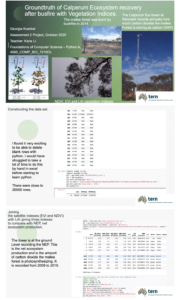
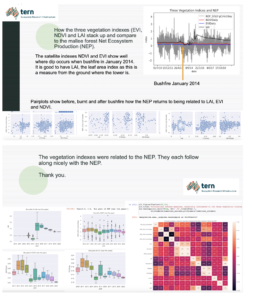
Having a look online, there are also plenty of great opportunities to upskill in plant science, such as those written about in this article: Agriculture degrees are having their moment in the sun. The FAO is concerned about food demand in the future, which means those in the agriculture sector have a pivotal role to play in the production of food (FAO, 2017).
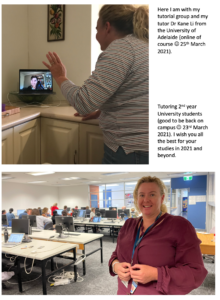
Reference: FAO. 2017. The future of food and agriculture – Trends and challenges. Rome. http://www.fao.org/3/i6583e/i6583e.pdf
Events
This weekend is Earth Hour.
Science week is 14th – 22nd August 2021. ASPS have been awarded funding to run events. 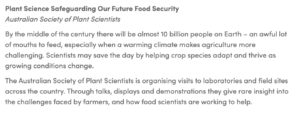
 Please also remember to encourage your colleagues and students to apply for ASPS society awards:
Please also remember to encourage your colleagues and students to apply for ASPS society awards:
ASPS Education and Outreach Award
Applications for the ASPS Education and Outreach Award should be lodged with the Honorary Secretary, ASPS Inc. secretary@asps.org.au Applications for the 2021 ASPS Education and Outreach Award are now open. The closing date for the 2021 award is April 16th 2021.
RN Robertson Travelling Fellowship
Up to $4000 is available to award in 2021 to support domestic or international travel for an early career researcher to undertake a research visit outside their host institution. More than one award can be made if the total requested funds are less than $4000.
Applications for the R.N. Robertson Travelling Fellowship should be forwarded in electronic form to the Hon Secretary of ASPS (secretary@asps.org.au). Applications for the 2021 Fellowship are now open. The closing date is 16th April 2021. To be eligible for this fellowship round some fraction of the planned work must take place in 2021.
Please also make sure your ASPS membership is up to date and encourage your colleagues and students to join ASPS. Remember to tweet to @asps_ozplants if you have news and have upcoming events.
Plus… save the date for Thursday and Friday 25th and 26th November 2021 for our ASPS hybrid conference. Details soon.
February 2021 Phytogen – Apply for society awards/fellowships – deadlines March 19th/April 16th 2021
25 February 2021
Welcome to February 2021 Phytogen. All the best for university students in their orientation weeks and settling into learning for the year ahead.
In March and April 2021, are deadlines for our society awards. I hope you will be encouraged to apply and to encourage your students and colleagues. Details about all awards can be found here.
To inspire you, here is a wonderful report from the 2020 Peter Goldacre Award recipient, Dr Alex Wu from the University of Queensland.
Mathematical modelling to aid plant/crop science research by Dr Alex Wu, University of Queensland.
Improving crop productivity is important for safeguarding food security in the face of growing populations and increasing climate risks; genetic improvement approaches continue to play a key role. Fundamental plant science research generates new possibilities in which plants could be manipulated, but strategising whole-crop productivity improvement would need robust phenotypic prediction capabilities. Considerable rigour is exercised in predicting manipulation consequences, for example, from photosynthesis (pathway) to leaf (organ) level, however, complexities arising from scaling to the whole-crop level should not be overlooked for maximising crop productivity gains (Wu et al. 2016). The Peter Goldacre award recognises the contributions that I have made, during my postdoc in the ARC Centre of Excellence for Translational Photosynthesis, and with numerous collaborators, in advancing our skills in phenotypic predictions via development of a plant/crop simulation model from integrating multidisciplinary plant science knowledge.

Figure: Connections across scales of biological organisation can be captured by dynamic plant/crop models to enable robust phenotypic prediction at the whole-crop level. Modelling framework helps to unravel (dissect) further mechanisms and physiological basis for crop-level response. The fading arrows indicate reduced confidence when predicting consequences higher up in the scales if lacking considerations of complexities associated with genetic controls, environmental effects and interactions among plant growth and development processes.
Foreseeing how changes in components in particular pathway(s) would influence the whole crop is confounded by biological complexity associated with interacting mechanisms and physiological processes, environmental effects and interactions among plant growth and development rules. It’s complex! The challenges were to identify key complexities involved, capture them reliably via equations in a cohesive predictive modelling framework, and expand on biological functions of model components so genetic perturbations can be represented via changing closely associated model coefficients. The development of a cross-scale model that links leaf photosynthesis to canopy growth and grain yield in C3 and C4 cereals is such a model; enabling robust phenotypic predictions for assessing impacts on whole-crop responses from photosynthetic perturbations (Wu et al. 2018; Wu et al. 2019; Leakey et al. 2019; Hammer et al. 2019). Developing adequate knowledge to facilitate communications with peers from other fields of research is key in transdisciplinary research.
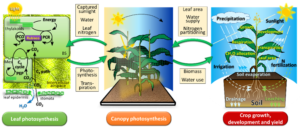
Figure: Cross-scale modelling framework connecting leaf photosynthetic functions with canopy growth and whole-crop grain yield (adapted from (Wu et al. 2019)).
Modelling can add valuable insight to plant/crop science research by unravelling the mechanisms and physiological basis for plant responses. Our modelling identified that enhancing leaf photosynthesis can improve grain yield under well-watered environments, but negatively affect crops in typical dryland production environments. Insight from analysing temporal crop attribute trends over the growth cycle suggests mechanisms to decouple photosynthetic rate from stomatal conductance is crucial for maximising crop productivity gains (Wu et al. 2019). Being able to efficiently conduct comparative analysis of different traits in much broader context, would help to paint a more comprehensive picture, which can lead to novel perspectives in fundamental plant science research.
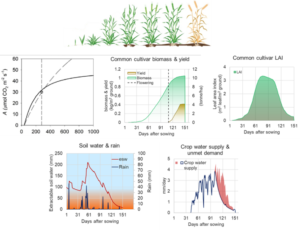
Figure: Details involved in simulating a wheat crop over its growth cycle. Bottom panels show simulation of leaf photosynthetic CO2 response and temporal trajectories of crop above ground biomass, grain yield, leaf area index, extractable soil water, crop water supply and unmet demand (red shading in the bottom right). Texts as part of the illustration only.
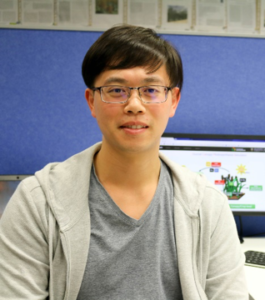 In my current research as an ARC DECRA Fellow at the University of Queensland in the Centre for Crop Science, I will improve knowledge on plants’ strategies for yield potential and drought tolerance by conducting plant gas-exchange and physiological studies on crop species and genetically modified genotypes. This knowledge will be used to further advance the cross-scale model and unlock new phenotypic prediction capabilities. Plant traits will be captured by the cross-scale model and will be mixed and matched in a cross-scale model driven crop optimisation algorithm to identify avenues for whole-crop improvement. This experiment-modelling synergy would establish a new method for designing crops to strategise whole-crop improvement to meet future challenges.
In my current research as an ARC DECRA Fellow at the University of Queensland in the Centre for Crop Science, I will improve knowledge on plants’ strategies for yield potential and drought tolerance by conducting plant gas-exchange and physiological studies on crop species and genetically modified genotypes. This knowledge will be used to further advance the cross-scale model and unlock new phenotypic prediction capabilities. Plant traits will be captured by the cross-scale model and will be mixed and matched in a cross-scale model driven crop optimisation algorithm to identify avenues for whole-crop improvement. This experiment-modelling synergy would establish a new method for designing crops to strategise whole-crop improvement to meet future challenges.
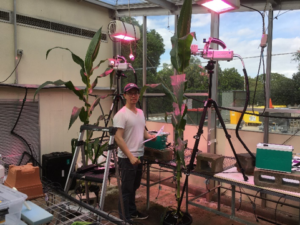
Above right: Alex in the office with the cross-scale model in the background; Above: Alex in the glasshouse taking plant gas-exchange measurements.
Alex is currently looking for a PhD student to join him on his new DECRA project on a plant physiology–modelling journey at UQ. Please help share the news.
Email: c.wu1@uq.edu.au
Webpage: www.qaafi.uq.edu.au/profile/405/alex-wu
References
Hammer G, Messina C, Wu A, Cooper M (2019) Biological reality and parsimony in crop models—why we need both in crop improvement! in silico Plants 1 (1).
Leakey ADB, Ferguson JN, Pignon CP, Wu A, Jin Z, Hammer GL, Lobell DB (2019) Water Use Efficiency as a Constraint and Target for Improving the Resilience and Productivity of C3 and C4 Crops. Annu Rev Plant Biol 70 (1):781-808.
Wu A, Doherty A, Farquhar GD, Hammer GL (2018) Simulating daily field crop canopy photosynthesis: an integrated software package. Funct Plant Biol 45 (3):362-377.
Wu A, Hammer GL, Doherty A, von Caemmerer S, Farquhar GD (2019) Quantifying impacts of enhancing photosynthesis on crop yield. Nature Plants 5 (4):380-388.
Wu A, Song Y, van Oosterom EJ, Hammer GL (2016) Connecting Biochemical Photosynthesis Models with Crop Models to Support Crop Improvement. Frontiers in Plant Science 7:1518.
The Jan Anderson Award had two amazing recipitants in 2020. Dr Crystal Sweetman from the University of South Australia has written a report for you to enjoy below. Our other recipient, Dr Kristine Crous from the Hawkesberry Institute, University of Western Sydney will write about her experience for Phytogen in May 2021, stay tuned.
Jan Anderson report by Dr Crystal Sweetman, Flinders University of South Australia.
Firstly I’d like to say that I was truly honoured to be a joint recipient of the ASPS Jan Anderson award in 2020. I have been a member of ASPS since my Honours year and enjoyed the great support that this society gives young plant researchers, including travel and networking opportunities. As a recipient of this award I have gained an opportunity to share some of my ideas and achievements and this has been a great motivator for me. I also want to acknowledge the Flinders Plant Molecular Physiology Research Group and past students involved in the research, as well as my wonderful partner and our families who have made it possible to maintain a scientific career during my new venture as a parent.
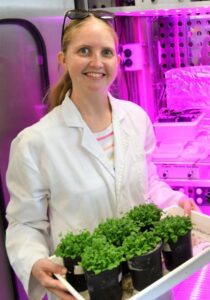
The award recognises work I completed in recent years as a research associate at Flinders University, where I have been using molecular and biochemistry tools to progress the field of plant mitochondrial respiration and abiotic stress tolerance. In particular, I functionally characterised the main enzyme responsible for NADH oxidation at the interface of mitochondria and the cytoplasm and demonstrated the importance of this “type II” NADH dehydrogenase during environmental stress. The enzyme is part of an alternative pathway of respiration (AP) that is unique to plants and lower eukaryotes. The AP can mitigate the production of potentially harmful reactive oxygen species during stress and balance metabolic and energy-related processes in the cell by uncoupling respiration from ATP synthesis. I also provided the first evidence of cooperative function between type II NADH dehydrogenase and another key component of the AP, alternative oxidase, which together enable a complete bypass of the classical mitochondrial electron transport chain in plants. Elimination of either enzyme impaired the ability of Arabidopsis plants to withstand and recover from a combined drought and elevated light stress, while enriching both enzymes improved tolerance and recovery (Sweetman et al. 2019a). Together these are promising candidates for selective breeding strategies or engineering plants with improved abiotic stress tolerance.
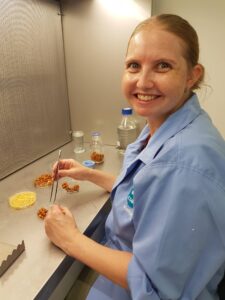
Work in our laboratory continues to explore the mechanism of the AP in environmental stress tolerance and expands the system to cereals and legumes. We have identified the relevant stress-responsive AP genes and their co-expression relationships in rice, barley, chickpea and other legumes (Wanniarachchi et al. 2018; Sweetman et al. 2019b; Sweetman et al. 2020). More than 25% of respiration from healthy chickpea leaf mitochondria can occur via the AP so there is huge potential for improving plant growth and energy production by modulating this pathway. I hope that my research can guide the development of more sustainable and resilient crops, to cope with increasing environmental growth challenges.
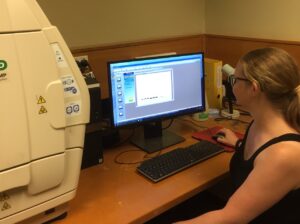
Sweetman et al. (2019a) Plant Physiol. 181:774-788
Sweetman et al. (2019b) Plant, Cell & Env. 42:71-84
Wanniarachchi et al. (2018) Int. J. Mol. Sci. 19:915
Sweetman et al. (2020) Int. J. Mol. Sci. 21:3844
Events
Science Meets Parliament, Tuesday 2nd March – Thursday 1st April 2021. Registration closes 28th February 2021.

Please let us know (@asps_ozplants) if you have any interesting events.
Save the date…. Thursday and Friday 25th & 26th November 2021 for ASPS hybrid virtual and state meetings. More details to follow. You will be hearing from your state representatives. In the meantime make sure your membership is up to date and encourage students and colleagues to join us.
ASPS Membership: https://www.asps.org.au/members
National Eucalypt Day, Tuesday 23rd March 2021
visit: https://www.rememberthewild.org.au/eucalypt-of-the-year-2021/
and vote for eucalypt of the year 2021, revealed March 2021. Post your favourite photos #Eucalyptoftheyear and tweet to: @Eucalyptaus
International Womens Day Monday 8th March 2021.
January 2021 Phytogen
26 January 2021
Welcome to Phytogen for 2021.
On the 20th of January 2021, I talked with Dr Peter Ryan, the recently appointed President of ASPS. I thought you will enjoy reading a brief snapshot of his career and pathway to the Presidency. I’ve also asked him to provide some photos and references to complement the story.
I first heard Peter’s name in the 1990s when he was a frequent visitor to Adelaide to collaborate with my PhD supervisor Professor Steve Tyerman. Peter was investigating the mechanisms of aluminium tolerance in plants at the time and had a hunch that the major gene controlling this trait in wheat encoded an anion channel. He was keen to test this idea in Steve’s lab by applying electrophysiological techniques to measure membrane transport processes. But more of this later.
A career by the ocean please!
The first thing I learnt is that Peter did not start out as a “plant person”. He grew up in the small NSW town of Forbes and his family visited the Central Coast for holidays – around Woy Woy and the Entrance. The ocean instantly captivated him. The family later moved to Avoca Beach and although he boarded at Hurlstone Agricultural High School in Sydney he spent all his holidays at Avoca swimming, snorkelling and diving. It was inevitable that his undergraduate degree at Sydney University would be in zoology and marine biology. The degree included only a single semester on marine algae and he blames this lack of classical botanical training for his embarrassing lack of taxonomy (although he’s still handy on an intertidal rock platform). Peter envisaged a career connected with the ocean and animals in some way so the fact that he ended up spending most of his research life studying wheat in Canberra still puzzles him.
Peter’s “marine dream” probably started going pear-shaped when he chose to do honours with Ros Hinde on nutrient uptake and temperature stress in the marine algae Codium fragile (also known as dead man’s fingers). This led to a PhD with N (Alan) Walker, also at Sydney University, looking at nitrogen uptake by the brackish algae Chara australis. With its giant coenocytic cells, Chara was a model system for membrane transport studies and the darling of electrophysiologists around the world. Most Australian pioneers in plant membrane transport had large tanks of Chara or Nitella growing in their labs. Those notables included Alex Hope, Geoff Findlay, F (Andrew) Smith, Rob Reid, Steve Tyerman and Mary Beilby as well as Alan. Peter claims to have had a steep learning curve during his PhD but was excited by his early forays into real research. He quickly admitted, however, that the publications to emerge from his PhD did not change the world. The first paper (Ryan and Walker 1993) has been cited a total of four times during the last 28 years: Peter is responsible for one of these, another appears in an obituary for his supervisor, a third was included a comprehensive review of Characean research, and the fourth was likely a mistake. The other papers fared a little better.
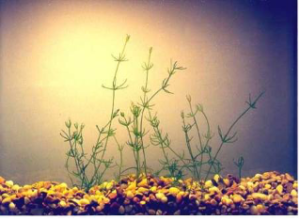

Chara australis growing in a tank.
Vale Thomas B Kinraide
(USDA West Virginia)
(1942-2020).
A terrific scientist and good friend in Ithaca.
Best laid plans slip away with post-docs in Tasmania and the USA
Peter completed a post-doc with Ian Newman in the physics department at the University of Tasmania in 1989 looking at nutrient fluxes along Chara cells and maize roots using the recently invented microelectrode ion flux estimation (MIFE) technique. He enjoyed his time in Tassie very much and even bought a small block of land south of Hobart for $12,000 hoping that he would get further work or perhaps retire there later. Instead, he applied for a CSIRO Travelling Scholarship and, on the encouragement of Peter Randall at CSIRO, joined Leon Kochian’s lab at the USDA lab on the stunningly beautiful Cornell University campus in Ithaca NY, USA. This is where Peter began working on the mechanisms of aluminium toxicity and tolerance in plants. Aluminium toxicity is the major cause of yield losses on acid soils in Australia (~$1 billion pa) because, as soil pH falls, the concentration of the highly toxic trivalent aluminium (Al3+) ion increases in the soil solution. Micromolar concentrations can inhibit the root growth of many important crops. Australia has large areas of acidic soils in the south-east growing zones and in Western Australia and the pH of some highly productive regions alarmingly continues to decrease. Germplasm improvement and lime application are the main management options available to growers.
Additional funding from the USDA and Cornell allowed Peter to extend his time with the USDA to almost three years. During that time, he was lucky enough to meet and work with other exceptional scientists including Leon, Tom Kinraide and Tony Glass. It was during Tom Kinraide’s short sabbatical at Leon’s lab that they began to discuss the fixed charges on the cell membranes and cell walls and how charge density would influence the perceived toxicity of multivalent ions such as aluminium (Kinraide and Ryan 1991; Kinraide et al., 1992). It was an immensely interesting and productive collaboration for Peter. Sadly Tom Kinraide passed away last year.
Peter recalls that of the papers published from that time in Ithaca, the one with the greatest number of citations came from the simplest of studies. It examined the spatial aspects of aluminium toxicity on maize roots and demonstrated that exposing aluminium to just the apical few millimetres of root was sufficient to inhibit growth (Ryan et al., 1993). If all the root was exposed to Al3+ except for that small region, growth was similar to the Al3+-free controls. This confirmed that direct interactions between aluminium and cells at the root tip were required to inhibit growth. Peter was very grateful for the opportunities provided by that wonderful scholarship which, he regrets, are no longer available. During that time at Cornell he also met his future wife Becky.
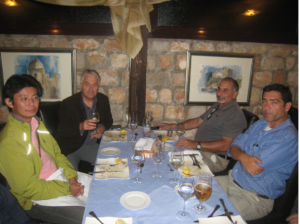
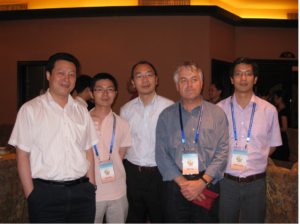
Catching up many years later at a workshop in Dubrovnik 2015. Shown are Naoki Yamaji, Peter Ryan, Leon Kochian and Miguel Pineros.
Members of the international steering committee for symposia on plant-soil responses to low pH. Shown are Renfeng Shen, Jianli Yang, Jian Feng Ma, Peter and Jian Shao Zheng at a symposium in Guangzhou 2009.
Returning to CSIRO
Peter returned to Canberra in 1993 and began working in related areas in the Black Mountain labs with Manny Delhaize and Peter Randall. I found it interesting hearing how their work on Al3+ tolerance developed over the years. Manny had joined CSIRO two or three years earlier than Peter after returning from his own Travelling Scholarship to Los Alamos, USA. During that time, he had obtained a segregating population of wheat varying in Al3+ tolerance from Brendan Scott at the NSW DPI and found that the roots of tolerant genotypes accumulated less aluminium and released more malate than sensitive genotypes. The genetics suggested a single major gene was responsible. Once Peter joined the team they established that the malate release only occurred from the root apices and gathered patch-clamping evidence that anion channels were involved (Delhaize et al., 1993; Ryan et al., 1995; Ryan et al., 1997; Zhang et al., 2001). Their model proposed that the malate released from roots protects the sensitive root tips by binding with aluminium to form less harmful complexes. This was the first mechanism for aluminium tolerance in plants that was supported by physiology and genetics. Soon after its publication many other groups began to report similar mechanisms operating in other monocots and eudicots (Ma et al., 2001; Ryan et al., 2001). However, identifying the gene controlling aluminium tolerance in wheat remained their main goal.
Peter explained that the 1990s was an exciting period in acid soil research for other reasons because, in Japan, Professors Hideaki Matsumoto and Yoko Yamamoto from Okayama University secured a generous grant to study acid soil stress in crops. This enabled them to recruit many enthusiastic students and post-docs and to sponsor a series of focused workshops on the subject. Regular attendees to these workshops included Walter Horst, Leon Kochian, Tadao Wagatsuma, Hiroyuki Koyama, Zed Rengel and many outstanding early career researchers. The latter included Jian Feng Ma, Takayuki Sasaki, Miguel Pinēros and Shao Jian Zheng just to name a few, all of whom have made substantial contributions to the field.
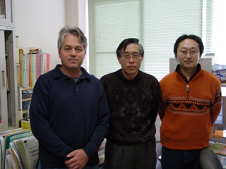
Visiting collaborators Hideaki Matsumoto and Takayuki Sasaki at Okayama University in the mid 1990s.
Genes, genes and more genes
It finally happened. Eleven years after the mechanism for Al3+ tolerance in wheat was first proposed, a team from CSIRO and Okayama University finally published the gene (Sasaki et al 2004). They named it the aluminium-activated malate transporter (TaALMT1). Turns out that TaALMT1 did encode an anion channel as Peter predicted – in fact it was the first member of a novel family of anion channels. Members of the ALMT1 family are now known to be widespread in plants where they perform an array of different functions in different tissues – mostly unrelated to Al3+ tolerance. For example, it is now clear that some ALMTs encode the rapid anion channels (R type/QUAC) identified years earlier by electrophysiologists in guard cells (Roelfsema and Hedrich, 2012). Many ALMTs are also permeable to γ amino butyric acid (Ramesh et al., 2018) and therefore may act as important signalling receptors. An individual ALMT can even perform multiple roles in the same plant plant (Xu et al., 2015). Peter believes this fascinating family of channels has many more surprises to reveal.
A few years later, the team identified a second mechanism of Al3+ tolerance in wheat which relies on the release of citrate from the root apices instead of malate. The gene controlling this second mechanism was identified and named TaMATE1B. It also encodes a transporter protein but from the multidrug and toxic compound exudation (MATE) family (Ryan et al 2009; Tovkach et al. 2013). It soon became clear from mutational studies in rice and Arabidopsis that other mechanisms of Al3+ tolerance, independent of organic anions, were also operating in plants, sometimes in parallel. These findings provided novel opportunities for improving the acid-soil tolerance of important crop species either through conventional breeding or through biotechnology (Delhaize et al., 2004; Ryan and Delhaize 2010; Ryan et al 2011).
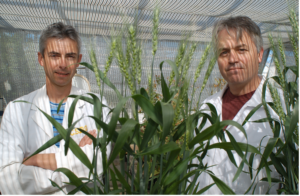
Manny Delhaize and Peter Ryan in a glasshouse at CSIRO Black Mountain laboratories.
Peter’s other research interests have revolved around roots and nutrition. He recently enjoyed interacting with John Passioura and Andrey Carminatti looking at water uptake, and with Evans Lagudah, Ricky Milne and Kathy Dibley at CSIRO investigating adult plant resistance to diseases. Peter also began working with soil microbiologist Akitomo Kawasaki, Michelle Watt and others to examine how the microbiome around roots can be engineered by manipulating root exudates (Kawasaki et al 2016, Kawasaki et al 2021). Peter explained that there is increasing interest in methods to manipulate the rhizosphere in order to encourage the persistence of beneficial microorganisms around roots. This approach could provide low-input options for improving plant nutrition, increasing weed competitiveness and minimising root diseases.
Lifting the gaze from the bench
Now as ASPS President, Peter is considering other issues. He is particularly concerned about the falling enrolments in plant biology and agriculture at universities, two disciplines that need to be boosted if countries are to meet the challenges presented by a growing world population. He reminds me that agriculturalists face the task of growing ~50% more food over the next 30 years using the same area of land and doing so in a sustainable manner. He offers two factors that may explain the disappointing enrolments in plant sciences. The first is the quality of science education at the primary and secondary levels. Figures quoted by the Office of the Chief Scientist a few years ago revealed that 26% of teachers at Years 7–10 and about 15% of teachers at Years 11–12 are teaching subjects they have not specialised in (https://research.acer.edu.au/cgi/viewcontent.cgi?article=1005&context=policyinsights). He suggests that everyone should be astonished by these stats – we can hardly expect students to be enthused or excited by subjects that their own teachers may be struggling to fully grasp themselves. Teachers are critical to our communities but as a society he believes we undervalue them and underpay them. The second factor in declining enrolments is the precarious career paths faced by early career researchers – a serious deterrent. We can forgive students for hesitating to choose a future in plant science when too many of them complete their first or second post-docs only to find they are unable to win further research grants or secure one of the few jobs in academia. Peter joins the chorus of discontent in these areas but hopes to work with other organisations, such as Science and Technology Australia, to develop policy alternatives to parliamentarians and decision makers.
The conversation inevitably drifted to Covid 19 and it was here that Peter expressed some final points. He recognised the terrible disruption Covid caused research in 2020 by restrictions to movement and resources but was quick to emphasise some positive outcomes for science. When governments around the world were faced with this crisis, some quickly sought expert advice while others ignored it. Those countries that did not seek advice, or did so too slowly, suffered more and incurred many more deaths than the countries that responded rapidly. This correlation became obvious to anyone in the world with a TV or radio and he argues that it helped science regain some standing in the community, highlighting the value of facts and reason over conjecture and self-interest. Peter asserts that this change catalysed an important reversal from the anti-science mindset and “alternative facts” that have plagued the climate debate. Peter despairs at the lack of urgency about climate change and hopes that we can ride this tide of change to convince governments that more ambitious climate policies are required to reduce carbon emissions.
Finally, Peter suggests that a second positive outcome emerging from Covid was providing a perfect example of how research funding leads directly to innovation and national benefit. In less than a year, a handful of effective vaccines against Covid 19 have been conceived, developed, tested and produced on a global scale ready for distribution. This was an extraordinary feat, especially considering that it was not even clear that effective vaccines to coronaviruses were possible. Although the vaccine generated here in Australia by the University of Queensland was not continued, the innovative “molecular clamp” platform technologies they used will surely be useful in the future. Peter emphasises that science funding should never be discretionary or an optional extra that is traded from budget to budget. Instead it should be an essential part of how we prepare for the future.
Delhaize, E., Ryan, P.R. and Randall, P.J. (1993) Aluminum tolerance in wheat (Triticum aestivum L.) II Aluminum stimulated excretion of malic acid from root apices. Plant Physiology, 103: 695-702.
Delhaize E, Ryan PR, Hebb DM, Yamamoto Y, Sasaki T, Matsumoto H. (2004) Engineering high-level aluminum tolerance in barley with the ALMT1 gene. Proceedings of the National Academy of Sciences, USA. 101, 15249-54
Kawasaki A, Dennis PG, Forstner C, Raghavendra AKH, Richardson AE, Watt M, Mathesius U, Gilliham M and Ryan PR (2021) The microbiome of wheat and rice roots exhibits significant differences in structure between root types and along root axes. Function Plant Biology (in press).
Kawasaki A, Donn S, Ryan PR, Mathesius U, Devilla R, Jones A, Watt M (2016) Microbiome and exudates of the root and rhizosphere of Brachypodium distachyon, a model for wheat. PLOS One 11, e0164533
Kinraide, T.B., and Ryan, P.R. (1991) Cell surface charge may obscure the identity of the rhizotoxic Al species. Current Topics in Plant Biochemistry and Physiology, 10: 117-133.
Kinraide, T.B., Ryan, P.R., and Kochian, L.V. (1992) Interactive effects of Al3+, H+ and other cations on root elongation considered in terms of cell-surface electrical potential. Plant Physiology, 99: 1461-1468.
Ma JF, Ryan PR, Delhaize E (2001) Aluminium tolerance in plants and the complexing role of organic acids. Trends in Plant Science 6, 273-278
Ramesh S, Tyerman SD, Xu B, Bose J, Kaur S, Conn V, Domingos P, Ullah S, Wege S, Shabala S, Feijó J, Ryan PR, Gilliham M (2015) GABA signalling modulates plant growth by directly regulating the activity of plant-specific anion transporters. Nature CommunicationsDOI: 10.1038ncomms8879
Roelfsema MRG, Hedrich R (2012) Anion channels: master switches of stress responses, Trends in Plant Science 17, 221-229
Ryan PR, Delhaize E (2010) The convergent evolution of aluminium resistance in plants exploits a convenient currency. Functional Plant Biology 37, 275-284
Ryan, P.R., Delhaize, E., Jones, D.L. (2001) Function and mechanism of organic anion exudation from plant roots. Annual Review of Plant Physiology and Plant Molecular Biology 52, 527-560
Ryan, P.R., Delhaize, E., Randall, P.J. (1995) Characterisation of Al-stimulated efflux of malate from the apices of Al-tolerant wheat roots. Planta, 196: 103-111.
Ryan, P.R., DiTomaso, J.M. and Kochian, L.V. (1993) Aluminum toxicity in roots: Investigation of spatial sensitivity and the role of the root cap. Journal of Experimental Botany, 44: 437-446.
Ryan PR, Raman H, Gupta S, Horst W Delhaize E (2009) A second mechanism for aluminum resistance in wheat maps to chromosome 4BL and relies on constitutive efflux of citrate from roots. Plant Physiology 149, 340-351
Ryan, P.R., Skerrett, M., Flindlay, G., Delhaize, E., Tyerman, S.D. (1997) Aluminium activates an anion channel in the apical cells of wheat roots. Proceedings of the National Academy of Sciences, USA, 94: 6547-6552
Ryan PR, Tyerman SD, Sasaki T, Yamamoto Y, Zhang WH, Delhaize E (2011) Identification of aluminium-resistance genes in plants provides an opportunity for enhancing the acid-soil tolerance of crop species. Journal of Experimental Botany 62, 9-20
Ryan, P.R. and Walker, N.A. (1993). Accumulation of malate in the vacuoles of Chara australis during the uptake of ammonium from chloride-free solution. Journal of Experimental Botany, 44: 637-643.
Sasaki T, Yamamoto Y, Ezaki B, Katsuhara M, Ahn SJ, Ryan PR, Delhaize E, Matsumoto H (2004) A wheat gene encoding an aluminum-activated malate transporter. Plant Journal 37, 645-653
Tovkach A, Ryan PR, Richardson AE, Lewis D, Rathjen TM, Ramesh S, Tyerman SD, Delhaize E (2013) Transposon-mediated alteration of TaMATE1B expression in wheat roots confers constitutive citrate efflux from root apices. Plant Physiology 161, 880-892
Xu M, Gruber BD, Delhaize E, James RA, White RG, You JF, Yang ZM, Ryan PR (2015) The barley anion channel, HvALMT1, has multiple roles in guard-cell physiology and grain metabolism Physiologia Plantarum 153: 183–193. 2015
Zhang W-H, Ryan PR, Tyerman SD (2001). Malate-permeable channels and cation channels activated by aluminum in the apical cells of wheat roots. Plant Physiology 125, 1459-1472
The FAO (Food and Agriculture Organisation of the United Nations) has declared 2021 as UN’s International Year of Fruits and Vegetables. There is an innovation award due March 19th 2021.
 |
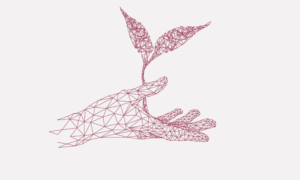 |
December 2020 Phytogen
11 December 2020
What to do over the summer holidays……
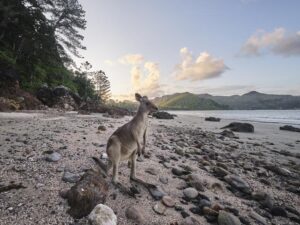
Over the summer holidays we hope you manage to get out into Nature, Rest, Recharge and Rejuvinate like this kangaroo.
Below is a recipe for gingerbread Christmas cookie trees. Look at how the ingredients are mostly plants. You might enjoy the links to read more about each of these amazing ingredients.
Gingerbread Christmas Cookie Trees

recipe from: Food network
Bake Time: 8 to 10 minutes
Total Time: 2 hours
Servings: 2 dozen, 4 to 5 cookies per tree (depending on size)
Ingredients:
Gingerbread Cookies
3 cups all-purpose flour
¼ tsp baking soda
¼ tsp salt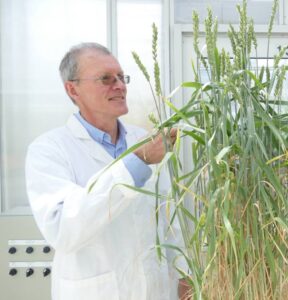
2 tsp cinnamon, 1 tsp ginger
¼ tsp nutmeg
¼ tsp cloves
6 Tbsp unsalted butter, at room temperature
½ cup brown sugar
1/3 cup light corn syrup
1/4 cup molasses 1 to 2 Tbsp water
Prof. John Evans (ANU) with Triticum aestivum (wheat)
Royal Icing
2 cups confectioners’ sugar
1 ½ Tbsp meringue powder, 3 Tbsp water, plus more to thin, 1/2 Tbsp light cornsyrup, ¼ tsp vanilla extract or lemon juice (optional)

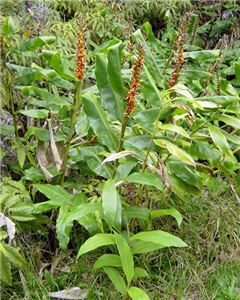
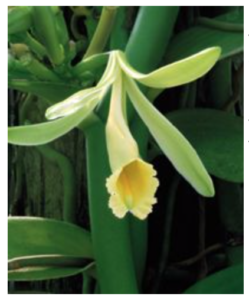
Zingiber officinale (ginger), Cinnamomum verum (cinnamon) and Vanilla planifolia (vanilla)
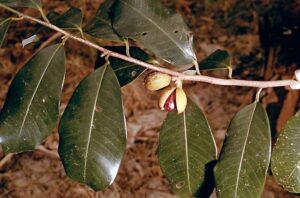
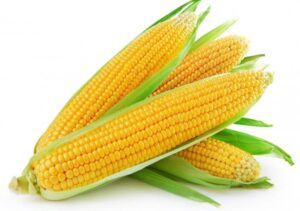
Zea Mays (sweetcorn), Myristica fragrans (nutmeg), Syzygium aromaticum (clove) and Saccharum officinarum (sugarcane).
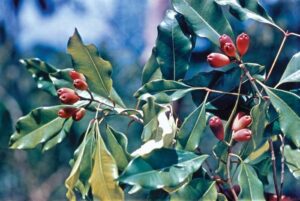
Directions:
Gingerbread Cookies
1. In a large mixing bowl, whisk the flour, baking soda, salt and all of the spices together. Set aside.
2. In the bowl of a stand-mixer fitted with the paddle attachment, mix the butter and brown sugar until smooth, about 2 minutes. Add the corn syrup and molasses and mix until combined.
3. With the mixer on low, add the dry ingredients in two additions. Mix until combined. If the dough seems dry, add in the water and mix until the dough comes together to form a ball.
4. Gather the dough and form into a disk. Wrap the disk in plastic and refrigerate for at least 2 hours or overnight.
5. When ready to bake, preheat the oven to 350°F. Remove the dough from the refrigerator and let sit at room temperature until it is soft enough to roll out (5 to 10 minutes). Line two baking sheets with parchment paper or non-stick baking mats. Set aside.
6. Dust a clean work surface lightly with flour. Roll out the dough until about ¼-inch thick and cut out with various sizes of star cookies cutters.
7. Baked the cookies for 8 to 10 minutes, or until the edges turn slightly golden. Repeat with the remaining dough.
8. Completely cool the cookies on a wire rack before decorating.
Royal Icing
1. Place the confectioners’ sugar and meringue powder in the bowl of an electric mixer fitted with a whisk attachment. Gently stir to combine. Add the water and mix on medium-low until combined. Turn the mixer up to medium-high and continue to mix until stiff peaks form, 5 to 8 minutes.
2. Add the corn syrup and vanilla or lemon (if using) and mix to combine. If the icing is still rather thick and clumps together, add more water (a teaspoon or two at a time), until the icing holds stiff peaks.
Assembly
1. Thin the royal icing with water until the desired consistency is reached (for piping, it should resemble the same consistency as toothpaste). Decorate the tops of the cookies, as desired.
Writing papers, STEM, awards and grant success
Congratulations to all and for those who missed out, please keep trying and reach out to to your colleagues for help with your grant, applications and paper writing.

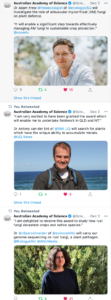
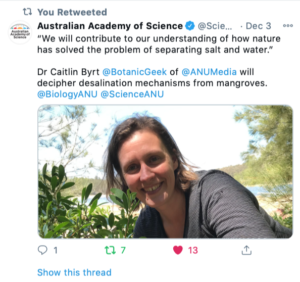 Teaching – From Dr Beth Loveys, Plant Science Education Representative. The University of Adelaide, beth.loveys@adelaide.edu.au
Teaching – From Dr Beth Loveys, Plant Science Education Representative. The University of Adelaide, beth.loveys@adelaide.edu.au
An example of online delivery of practical content in the Faculty of Sciences
Science based courses by their very nature are heavily reliant on giving students practical experiences in the laboratory to facilitate the connection of theory with application and context. Cancellation of all face to face practical classes during the COVID19 pandemic has required creative solutions to be sought to give students some appreciation of the practical components of their courses.
Foundations of Plant Science is a core level II course taught in the School of Agriculture, Food and Wine for Bachelor of Viticulture and Oenology and Bachelor of Agricultural Science students. Combining lecture content with video demonstrations, screen recording and knowledge checking quizzes was used to deliver a virtual practical for students in this course. One of the fundamental concepts taught in the course is that of plant water transport.
During live streamed lectures students were exposed to the relevant theory of plant water transport this was enhanced by demonstrations using the document camera function in the lecture theatre, of the practicalities of measuring plant water status. Formative in-lecture quiz questions were designed to get students thinking about what they had just seen and heard. Students were able to engage synchronously or asynchronously.

Students were then directed to the relevant MyUni pages in the course to undertake their online practical.
Peer mentors (senior students who had completed the practical in 2019) were engaged to film the practical components of the laboratory session that the 2020 cohort of students were missing out on. Audio narration explained the methodology being demonstrated by the peer mentors. It was important that the practical skills were demonstrated by peer mentors rather than academics to create an authentic practical class experience. Senior Peer Mentor Lucas Allen commented: “It was great to know that I was helping the second year students with their prac. It also helped to refresh my own knowledge of how to correctly use the pressure chamber 🙂.”
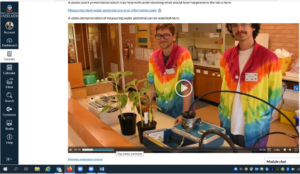
A class data set was provided and screen recording allowed additional explanation of the data and demonstration of required calculations.
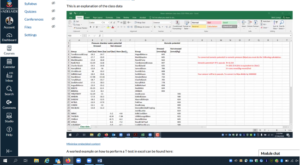
Students were able to check their knowledge with unlimited attempts at a practice quiz before completing the assessment task
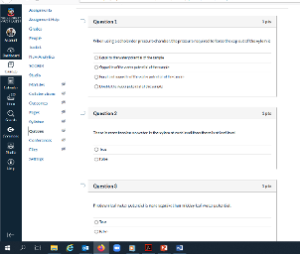
One of the current students commented: “Watching the video made the prac make so much more sense than just being given the data because I could understand the process.”
It is important to be aware that students may require more support when undertaking online tasks that replace face to face practicals due to the lack of experiential learning. This may be particularly apparent for kinaesthetic learners.
Below is a students reflection written after taking the course: Food Production in a Future Climate, this year. We hope you find inspiration, lovely work.
What must Australia do to achieve a Climate –Resilient agriculture?
Climate change is here, extreme weather events are now more frequent, but has this been totally or partially induced by the activities of humans? Despite that question, there is a range of things we must do as a nation, to reduce the impact.
Initially, we will need to reduce all chemicals used to grow food and at the same time grow plants that are suitable.
Secondly, we could use energy that is not dependent on fossil fuels. We could create colonies of the correct algae and low rainfall growing succulents to be used to manufacture bio-fuel so that all the solar and wind generated electricity (energy) is assisted by the use of this bio-fuel. Converting CO2 from the atmosphere to a hydro carbon fuel would achieve a similar result.
Reduction of the waste generated in all sectors of industry, agriculture and commerce is essential. To achieve that we will need to start our children’s education at home, then at school so they understand waste may come in many forms : eg. food that is not fully utilised because it’s been left to be overripe, there are too many leftovers thrown out after meals, or even that the lights are left on in the house .The damage done by feral animals is another form of extreme waste of plant food which results in the destruction of our environment . Natural recycling of organic matter will do that after we rid ourselves of these animals.
Water is our most critical resource, and that will mean developing plants that have greater water use efficiency, plus improving the care of soils to ensure we eliminate erosion. This will maximize the water that enters the soil profile. Once there, it can be used by the plant and at the same time, supplementing both the sub-soil and the aquifer.
However, we appear to have an abundance of salt water. At the same time, we need to pay attention to the plants that grow under the surface of the sea. Promoting the use of marine plants and algae, plus including the development of more salt tolerant plants, in particular those that produce food, will be essential.
Measurement of the effect of climate change to develop models for future prediction of rainfall and temperature will allow us to make decisions about which plants, C3 ( winter active ) or C4 (summer active ) will be the most suitable to grow and where.
Revegetation using trees, shrubs, forbs and grasses will need to be correctly landscape designed to suit the soil, and the topography of each hectare of land. This design (promoting biodiversity) would look at placing food crops using multiple species that allow for the interaction between plants ,animals and soil-biota. With the recycling of all nutrients, in particular carbon and nitrogen we can promote a balanced ecological environment that is more productive.
The concept of “recycling” refers not only to our food waste, but to all that enters our waste bins or is taken to our dumps. After all, promoting healthy compost is a primary example of recycling that can be achieved by any household. At the same time, reducing the number of items sent to landfill will reduce the methane gasses produced as these items slowly break down.
The balance between the cutting of trees (to produce packaging, as in cartons and paper bags , from only plantation timber) and the use of plastics needs detailed study for each application, and if plastics is the best way to go, the development of that material must come with an economic cost to recycle. Or be replaced by materials similar , “plastic substitutes” – like bags made from sugar cane, industrial hemp or jute, or straws made from millet, cereal rye or bamboo.
While some of these ideas are current, continued field research to find what is consistently sustainable is a must. And this would be best achieved through a national initiative rather than waiting for industries or commerce. Funding national bodies similar to the CSIRO, with links to university groups is paramount. But if the same research is not done in the lab or glass house by plant breeding groups or individuals there will be nothing in the field to trial.
At a grass roots level, supporting suburban and rural interest groups like Trees for Life or community gardens, would encourage all areas to grow more plants so that we maintain the bio-diversity of the old-style household that was partially self-sufficient in food. (Do not underestimate backyard horticultural crops and chickens). We need to limit the use of chemicals, working towards almost pure organic matter from compost heaps, maybe using chicken manure or similar as an added fertilizer. This can be achieved with more community gardens, potted plants and vertical growing systems in high rise buildings all with butterfly and bee colonies on the roof tops.
Ultimately, farmers will need to do the same. Sustainable farms will need Soil Biota Colony/Pods with plants nearby to attract bees, butterflies and good bugs, located near each stock trough to provide moisture so that fungi, frogs, worms and bacteria keep active and alive, all summer. Growing of summer active plants will also keep the soil alive and provide some protection from fire and flood In time, a modern nation will need to develop these farming methods on an economically viable scale. At the same time Bio-Security will become the accepted practice .
But ultimately, peace between nations and the people of the world (we must help each other), will result in much stronger leadership than we see at present. This is essential to promote the modifications we must make to tackle the damaging effects of climate change. In many cases, we know what we need to do, but we need the impetus to change current practices.
Check your membership, renew and encourage your students
Events
Please let us know (@asps_ozplants) if you have any interesting events.
 Besides staying safe, we wish you a Merry Christmas and a Happy New Year.
Besides staying safe, we wish you a Merry Christmas and a Happy New Year.
Recent Posts
Tags
Archives
- June 2025
- May 2025
- April 2025
- March 2025
- February 2025
- January 2025
- December 2024
- November 2024
- October 2024
- September 2024
- August 2024
- July 2024
- June 2024
- May 2024
- April 2024
- February 2024
- January 2024
- November 2023
- October 2023
- September 2023
- August 2023
- July 2023
- June 2023
- May 2023
- April 2023
- March 2023
- February 2023
- December 2022
- November 2022
- October 2022
- September 2022
- August 2022
- July 2022
- June 2022
- May 2022
- April 2022
- March 2022
- February 2022
- January 2022
- December 2021
- November 2021
- October 2021
- September 2021
- August 2021
- July 2021
- June 2021
- April 2021
- March 2021
- February 2021
- January 2021
- December 2020
- November 2020
- October 2020
- September 2020
- August 2020
- July 2020
- June 2020
- May 2020
- April 2020
- March 2020
- February 2020
- January 2020
- December 2019
- November 2019
- October 2019
- September 2019
- August 2019
- July 2019
- June 2019
- May 2019
- April 2019
- March 2019
- February 2019
- January 2019
- December 2018
- November 2018
- October 2018
- September 2018
- August 2018
- July 2018
- June 2018
- May 2018
- April 2018
- March 2018
- February 2018
- January 2018
- December 2017
- November 2017
- October 2017
- September 2017
- August 2017
- July 2017
- June 2017
- May 2017
- April 2017
- March 2017
- February 2017
- January 2017
- December 2016
- November 2016
- October 2016
- September 2016
- August 2016
- July 2016
- June 2016
- May 2016
- April 2016
- March 2016
- February 2016
- January 2016
- December 2015
- November 2015
- October 2015
- September 2015
- August 2015
- July 2015
- June 2015
- May 2015
- April 2015
- March 2015
- February 2015
- January 2015
- December 2014
- November 2014
- October 2014
- September 2014
- August 2014
- July 2014
- June 2014
Copyright 2017 Australian Society of Plant Scientists Disclaimer & Privacy
Website by Michael Major Media


